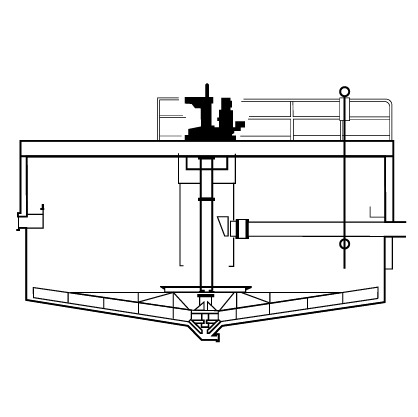
The Metallurgical Engineer's Toolbox
Thickener Sizing
Calculator valid for settling thickeners, high rate thickeners, and clarrifiersProcess Input
Parameters
ValueUnits
[t/h]
[m3/h]
Settling Properties
Parameters
Value
Value
[m/h]
[(t/h)/m2]
[(t/day)/m2]
-
Minimum Thickener Size
Parameters
ValueUnits
[m]
Thickener Selection
Parameters
ValueUnits
[m]
[m/h]
[(t/h)/m2]

Mechanical Design
Description
ValueUnits
[rpm]
[m/min]
-
-
[kN.m]
[kW]